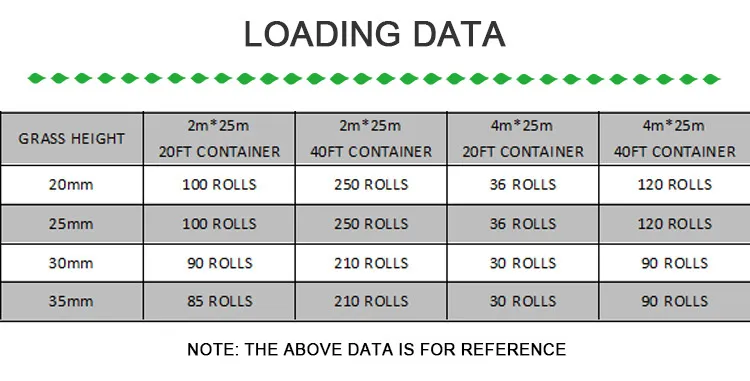
- Afrikaans
- Arabic
- Belarusian
- Bengali
- Czech
- Danish
- Dutch
- English
- Esperanto
- Estonian
- Finnish
- French
- German
- Greek
- Hindi
- Hungarian
- Icelandic
- Indonesian
- irish
- Italian
- Japanese
- kazakh
- Rwandese
- Korean
- Kyrgyz
- Lao
- Latin
- Latvian
- Malay
- Mongolian
- Myanmar
- Norwegian
- Persian
- Polish
- Portuguese
- Romanian
- Russian
- Serbian
- Spanish
- Swedish
- Tagalog
- Tajik
- Thai
- Turkish
- Turkmen
- Ukrainian
- Urdu
- Uighur
- Uzbek
- Vietnamese
replacing grass with artificial turf
Nov . 21, 2024 08:25 Back to list
Replacing Grass with Artificial Turf Benefits and Considerations
In recent years, the trend of replacing natural grass with artificial turf has gained significant momentum. This shift is evident in various settings, from municipal parks to sports fields and residential lawns. The advantages of this transition are compelling, and they deserve a thoughtful examination.
One of the most prominent benefits of artificial turf is its low maintenance requirements. Traditional grass lawns demand regular mowing, watering, and fertilizing to remain healthy and aesthetically pleasing. These tasks can not only be time-consuming but can also incur substantial costs in terms of water and labor. In contrast, artificial turf is virtually maintenance-free. It does not require mowing, and its water conservation aspect is particularly appealing in drought-prone regions. By installing artificial turf, homeowners and municipalities can significantly reduce their labor and water bills, leading to considerable long-term savings.
Another important factor to consider is the environmental impact. With climate change and water scarcity being pressing global issues, the installation of artificial turf can be an eco-friendly solution. By reducing the need for irrigation, we can conserve precious water resources. Furthermore, artificial turf is often made from recycled materials, contributing to the reduction of waste in landfills. This not only helps the environment but also promotes a more sustainable way of living.
Moreover, artificial turf provides a consistent and durable playing surface, making it an excellent choice for sports facilities. Natural grass can be easily damaged and often requires a recovery period after heavy use. This can limit the number of activities that can take place on a field, affecting athletes’ training and performance. In contrast, artificial turf can withstand heavy foot traffic and adverse weather conditions, allowing for year-round use. This can be particularly beneficial schools and communities looking to maximize their athletic programs.
replacing grass with artificial turf

Safety is another consideration when comparing natural grass to artificial turf. Artificial surfaces can be engineered to have specific shock-absorbing qualities, which can help reduce the risk of injuries. The uniformity of the playing surface also minimizes the chance of ankle sprains and other common sports injuries that can occur on uneven natural grass. Therefore, in various athletic settings, artificial turf can contribute to the overall safety of its users.
However, the switch to artificial turf is not without its criticisms. While it offers numerous advantages, concerns have been raised regarding the heat retention of synthetic surfaces. On hot days, artificial turf can become significantly warmer than natural grass, potentially leading to discomfort for players and pets alike. Additionally, the longevity of artificial turf can vary, often needing replacement every 8-15 years, which raises questions about its long-term sustainability and impact on landfills.
There are also health considerations to ponder. Some research suggests that the materials used in artificial turf, particularly rubber infill, may contain harmful chemicals that could pose risks to human health and the environment. Therefore, it is crucial for consumers to research products thoroughly before installation. Manufacturers need to provide transparency regarding the materials used and their safety.
In conclusion, replacing grass with artificial turf offers many benefits, such as reduced maintenance, water conservation, and enhanced durability for athletic activities. However, potential downsides, including heat retention and health concerns, warrant careful consideration. Making an informed choice involves weighing these factors against individual needs and preferences, ultimately contributing to a modern approach to landscaping and recreational spaces. As technology continues to advance, it is likely that the landscape of artificial turf will evolve, potentially addressing many of these concerns, making it an even more appealing option for sustainable living.
-
The Benefits of Artificial Turf for Indoors
NewsJul.15,2025
-
How Artificial Grass Suppliers Ensure Quality Products
NewsJul.15,2025
-
Artificial Grass and Pets: A Space for Relaxation
NewsJul.08,2025
-
Balcony & Outdoor Decoration with Artificial Grass
NewsJul.08,2025
-
Best Indoor Artificial Grass for Home
NewsJul.07,2025
-
Best Pet Turf for Dogs: Safe & Durable Artificial Grass Options
NewsJul.07,2025
Products categories









